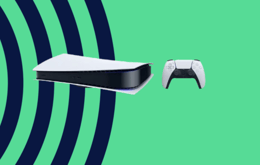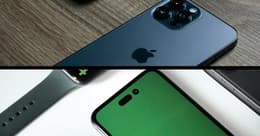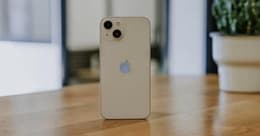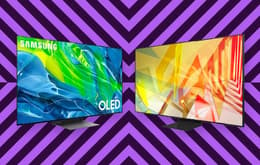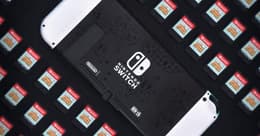
Nintendo Switch vs. Switch OLED: Is the upgrade worth it?
Updated on February 13, 2024
February 13, 2024
6 mins read
Miguel Garza
Sr. Tech Copywriter (US)
The Nintendo Switch OLED has significant display advantages over the original Switch, but many of the internal specs remain the same.
Look, we get it — sometimes you just need to dominate your friends in a couple of rounds of Mario Kart. But do you need the newest version of the Nintendo Switch to do it?
Nintendo’s innovative handheld device that transforms into a console, the Nintendo Switch, was released for the first time in 2017. The newest version of the device the Switch OLED, was released in 2021 with a few notable upgrades. So if you own the older version, you might find yourself asking this very question: “Is the OLED upgrade worth it?”
Looking at the Switch OLED vs. Switch, you may notice a few differences right off the bat, but that doesn’t mean the newer version is a complete and total upgrade.
Keep reading to discover the information you need to make the best decision for your lifestyle and gaming habits.
Switch OLED vs. Switch: Differences to know
To OLED or not to OLED? That is the question.
The obvious difference between the two options is right in the name. The upgraded version features an OLED screen that creates vivid, more realistic colors. It also has a slightly larger display (0.8 inches more, to be exact). But what the name doesn’t mention is the upgraded internal storage, with the Switch OLED offering double that of the original.
While the original Nintendo Switch features 32 gigabytes of internal storage, the Switch OLED offers 64 GB. Both devices also allow up to 2 terabytes of external storage.
For reference, Mario Kart 8 Deluxe takes up about 6.8 gigabytes of storage for a digital download, and The Legend of Zelda: Breath of the Wild takes up over 13 gigs. Realistically, you can fit about 3 or 4 digital download games on the original Nintendo or 7 to 8 on the Switch OLED.
There’s also a slight difference in weight, but considering the original Switch is only 0.05 pounds lighter than its OLED counterpart, it’s unlikely that the average gamer would notice.
Want to compare the pros and cons of the two devices side-by-side? Check out the chart below.
| Switch OLED | Switch |
Pros | Double the internal storage — 64 GB Brighter screen Slightly larger screen | Smaller price tag Slightly lighter |
Cons | Higher price tag Slightly heavier Screen upgrade makes no difference when connected to a TV | Less internal storage — only 32 GB Less vivid colors on the handheld screen |
Specs
Let’s get into the specifications … or specs, of it all. From screen size to storage to battery life, here’s everything you need to know about both devices.
| Switch OLED | Switch |
Screen size | 7-inches | 6.2-inches |
Screen resolution (handheld) | 720p | 720p |
Screen resolution (Connected to TV) | 1080p | 1080p |
Internal storage | 64 GB with external storage option up to 2TB | 32 GB with external storage option up to 2TB |
Console weight | 0.93 pounds (with Joy-Cons) | 0.88 pounds (with Joy-Cons) |
Battery life | 4 to 9 hours | 4 to 9 hours |
Charging type | USB-C | USB-C |
CPU/GPU | Nvidia Tegra X1 | Nvidia Tegra X1 |
Bottom line: Although the two devices are extremely similar, many might still find that the OLED option comes out on top since it includes a sizable boost in storage and a larger, brighter screen.
Display
The display on the handheld devices is the major difference between the two options. The OLED option is over half an inch bigger than the original and features OLED (organic light-emitting diode) technology — creating brighter, more detailed colors. This screen upgrade creates an immersive and realistic handheld gaming experience that many die-hard gamers will revel in.
That said, the Switch OLED’s screen resolution is no better than the original Switch, with both screens supporting a 720-pixel resolution. It’s also worth noting that the OLED screen upgrade doesn’t translate when connected to a television display unless the television is an OLED itself.
Additionally, the resolution to TV compatibility for both devices supports up to 1080 pixels. If you’re planning to mainly play with the device connected to a television, you may not find value in the Switch OLED.
Bottom line: The OLED display makes for a remarkable gaming experience, especially for a handheld device. If we were picking a device solely for display purposes, the Switch OLED would win every time.
Performance
If you’re hoping to find that the Switch OLED runs faster or smoother than its predecessor, you may find yourself disappointed. Both options share identical graphics processing and central processing units (Nvidia Tegra X1). There’s also no difference in how each device interacts with Nintendo’s online gaming service, Switch Online.
Other than the internal storage improvement, there’s almost nothing to compare and contrast when looking at the internal specs.
Bottom line: Since performance is identical, the original switch has the best value in this category.
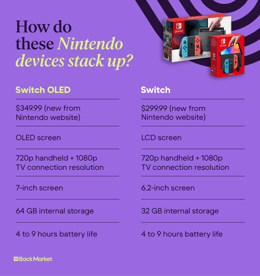
Battery life
Another, albeit, slight disappointment to the Switch OLED is the lack of battery upgrade. Both devices offer the same battery life of 4 to 9 hours. It may be worth mentioning that OLED screens tend to use more power so it’s still impressive that Nintendo was able to match the battery life without an upgraded battery.
Remember, batteries have a habit of declining over time so that 4 to 9-hour battery life is not guaranteed for the lifetime of the gaming system.
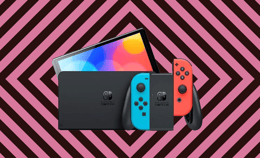
Bottom line: With the smaller price tag and no difference in battery life, the original Nintendo Switch wins this round.
Price
We’ve finally arrived at the question you’ve been waiting for: “What’s the price difference?” You might be surprised to discover that the price of a new Nintendo Switch OLED is only $50 more than the price of a normal Switch. Which we think is a fair price jump considering the significant display and storage upgrades.
For reference, a brand new Switch OLED from Nintendo.com will cost you $349.99 (not including taxes, fees, or shipping), while the basic Switch model costs $299.99.
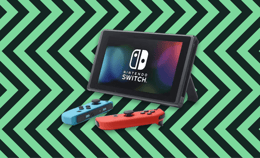
And if both of those prices seem a little hefty, we have good news for you: buying a verified refurbished Switch or Switch OLED is a great way to save some extra dollars and the earth.
Bottom line: Is the OLED Switch worth the upgrade?
Here’s our (slightly hot) take on whether upgrading is worth it: Probably not. If you already own the Nintendo Switch and are enjoying your gaming experience, there’s little reason to jump at getting the Switch OLED.
Unless your heart is set on upgrading internal storage — don’t forget, an SD card can boost your storage up to 2 terabytes — it’s probably not worth getting rid of your current console and taking on the price of a new one.
With that said, if you’re currently without a Nintendo Switch and you’re curious about which is better, the larger OLED screen makes for a stunning handheld gaming experience. Plus, the additional internal storage is a great benefit for convenience purposes. If you can afford the price jump, we’d recommend it over the original - plus, you can always trade in your current Nintendo to earn a little extra cash and reduce e-waste.
And remember, you’ll never pay full price when you buy from Back Market. With our verified refurbished tech, you can get video game consoles, including a Nintendo Switch or Switch OLED, for a fraction of the new price.
Head over to our storefront now to browse our best deals on gaming tech, such as consoles, monitors, headphones, and more.
Written by Miguel Garza, Sr. Tech Copywriter (US)
Miguel is always looking for new ways to provide unique perspective on popular tech and has taken his writing to the refurbished industry to promote sustainability. Outside of creating content, you might find him travelling the globe, coaching a fitness class, or cheering on his favorite sports teams (Go Dolphins!)

